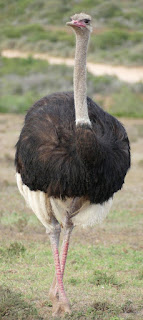Gorillas
Gorillas
Gorillas are gentle giants and display many human-like behaviors
and emotions, such as laughter and sadness. In fact, gorillas share 98.3% of
their genetic code with humans, making them our closest cousins after
chimpanzees and bonobos.
The largest of the great apes, gorillas are stocky animals with
broad chests and shoulders, large, human-like hands, and small eyes set into
hairless faces. The two gorilla species live in equatorial Africa, separated by
about 560 miles of Congo Basin forest. Each has a lowland and upland
subspecies.
Gorillas live in family
groups of usually five to 10, but sometimes two to more than 50, led by a
dominant adult male—or silverback—who holds his position for years. The bond
between the silverback and his females forms the basis of gorilla social life.
Females become sexually mature around seven or eight years old but don’t begin
to breed until a couple of years later. Males mature at an even greater age.
Once a female begins to breed, she'll likely give birth to only one baby every
four to six years and only three or four over her entire lifetime. This low
rate of reproduction makes it difficult for gorillas to recover from population
declines.
Both gorilla species have been decreasing in numbers for
decades, and a 2010 United Nations report suggests that they may disappear from
large parts of the Congo Basin by the mid-2020s.
video gorilla:
Reference:
https://www.worldwildlife.org/species/gorilla





Comentarios
Publicar un comentario